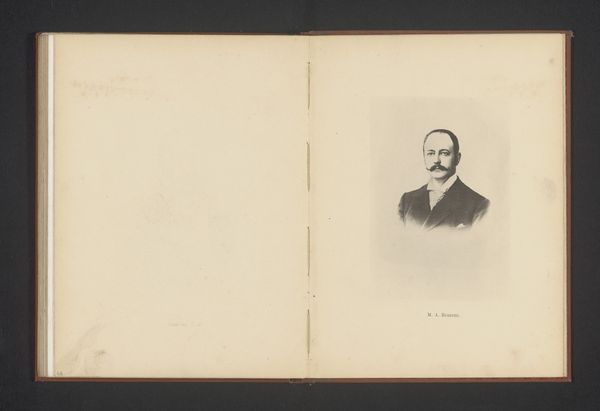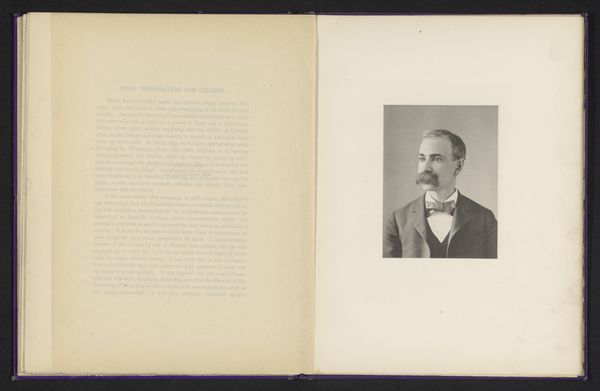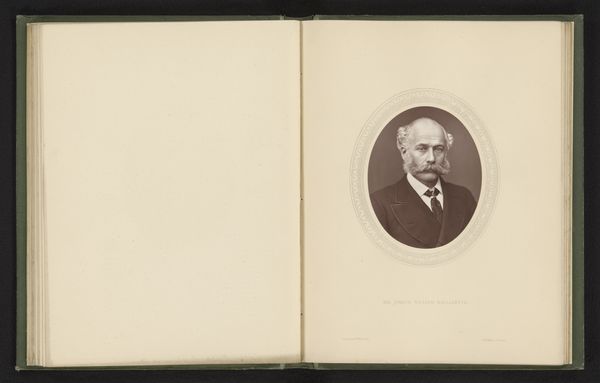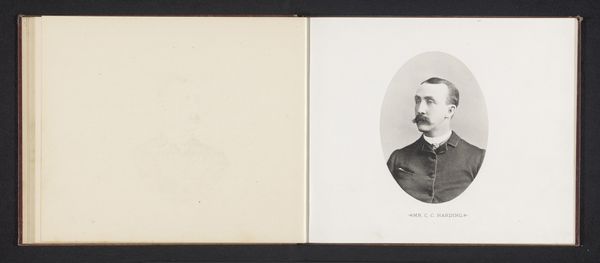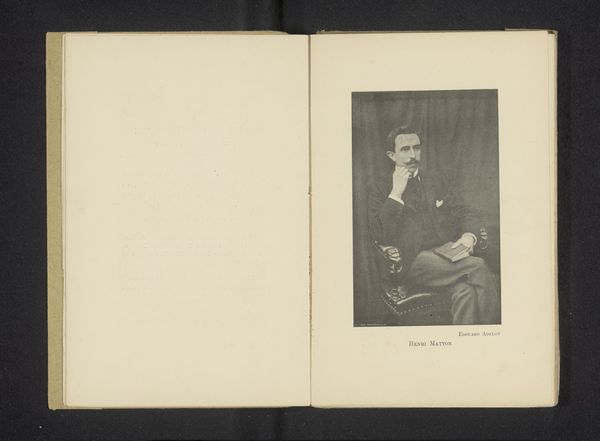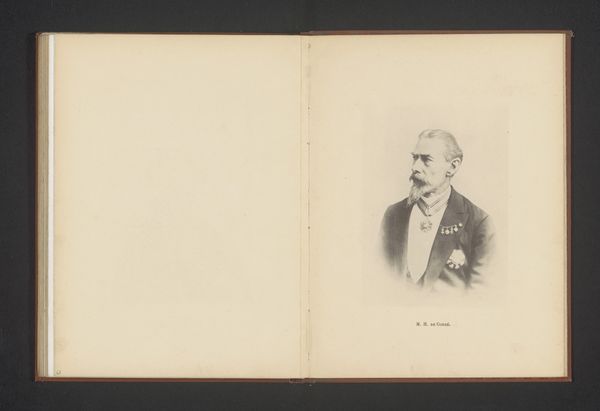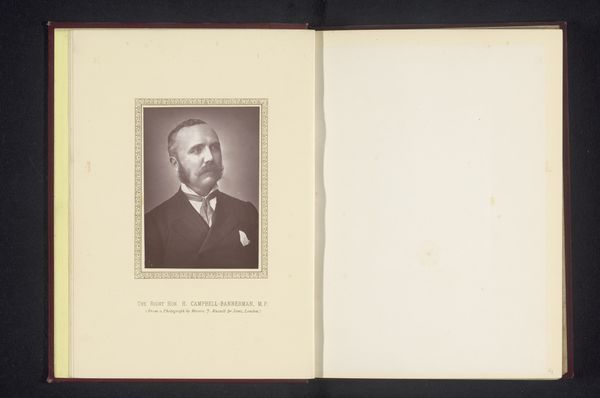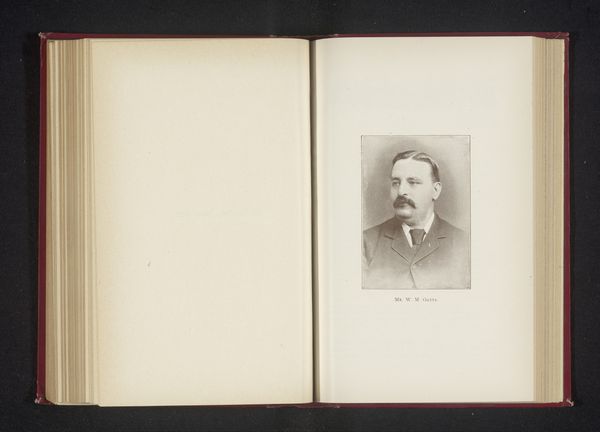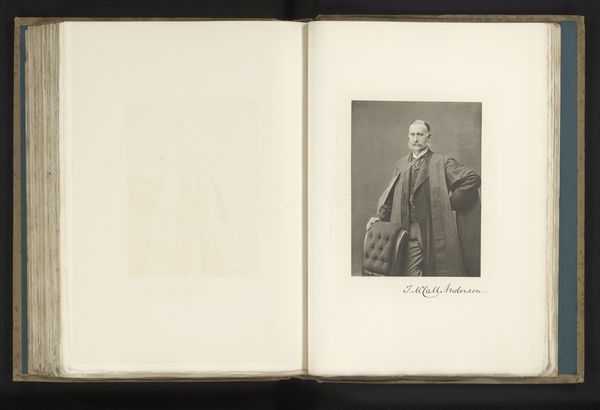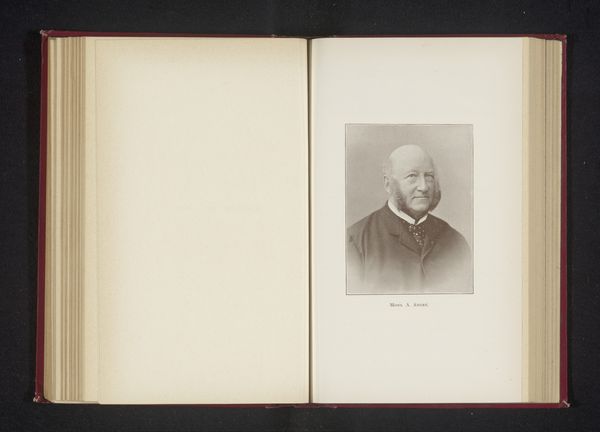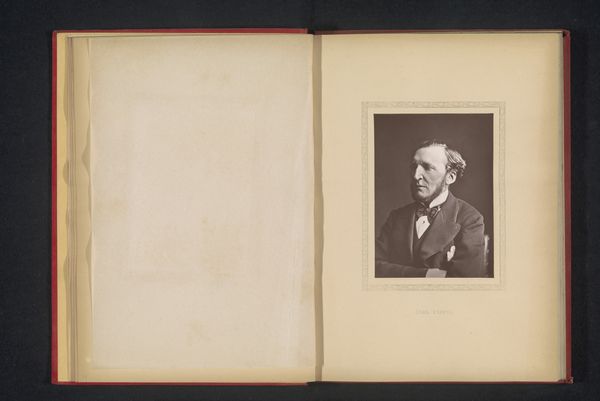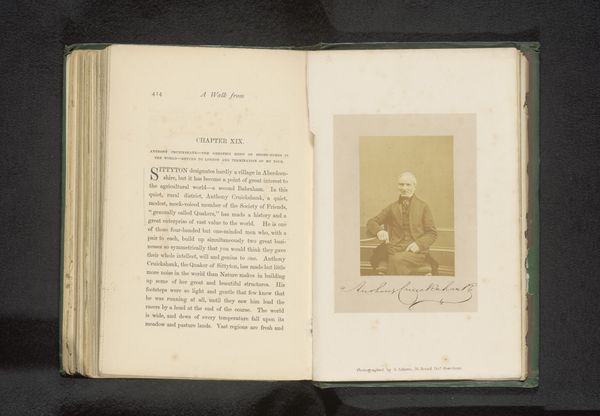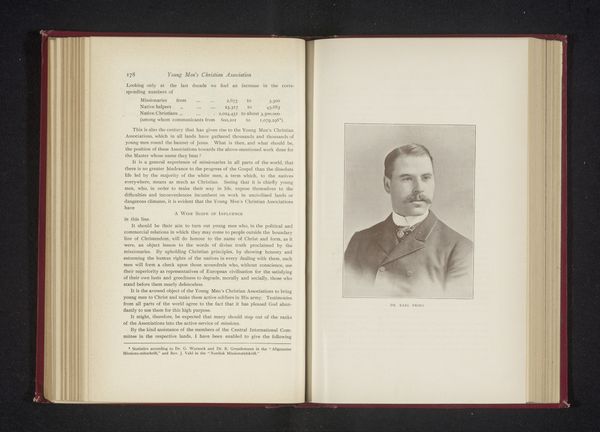
photography, gelatin-silver-print
#
portrait
#
aged paper
#
homemade paper
#
light coloured
#
photography
#
hand-drawn typeface
#
gelatin-silver-print
#
thick font
#
white font
#
delicate typography
#
thin font
#
realism
#
historical font
#
small font
Dimensions: height 162 mm, width 114 mm
Copyright: Rijks Museum: Open Domain
Curator: This intriguing gelatin-silver print, entitled "Portret van E. Vroonen," dates from before 1898 and offers a fascinating glimpse into the past. Editor: There’s an air of austerity, isn’t there? The monochromatic palette, the rather severe pose... it evokes a sense of societal restraint and perhaps a hint of the subject's personality as perceived by the photographer and potentially the sitter's desire for the photographic likeness of them to represent status. Curator: Absolutely. As a gelatin-silver print, it involves a complex chemical process. A glass or film base is coated with light-sensitive emulsion comprised of silver halide crystals suspended in gelatin. When exposed to light and developed, a latent image is formed and later fixed for permanence. Think about the precise control required in each step to yield such a detailed image on what appears to be a photograph mounted into a homemade paper setting. Editor: The handmade setting really highlights the potential labor involved for these older processes! I also think about the politics of representation in portraiture at this time, who had access to this technology, and what statements were these portraits meant to convey? This is especially significant considering the sitter and likely the photographer would have had some measure of control over this photograph as a lasting record. Curator: A very astute observation. The photographic process itself held a certain power; it was more accessible than painting, for example, yet still conveyed status. Editor: And how the photographer chose to represent Mr. Vroonen impacts our reading of him now. I imagine the intention was to depict respectability and seriousness, but seen through today's eyes, the somberness, feels particularly pronounced given the book or album context we are finding the photo in. There's almost a desire here to convey this sitter to an intimate circle of close viewers. Curator: The composition further emphasizes this controlled presentation. The man stands formally, perhaps a gesture indicating status. The contrast created by the tonality gives dimension, and despite the realism of the image, it becomes symbolic due to that staging of what might have been everyday clothing as formal. Editor: It brings up ideas of how we craft our identities, and also consider the constraints imposed upon identities depending on socio-political standing at that moment of time. These photos were about communicating the right thing to the right people, weren't they? What messages about class and masculinity can we distill from the final constructed image of M. E. Vroonen and his attire and accoutrements? Curator: Precisely. The material process enabled, but also shaped, these social performances frozen in time. Editor: It leaves me thinking about the unspoken narratives embedded within. Curator: Indeed, it is a fascinating artifact.
Comments
No comments
Be the first to comment and join the conversation on the ultimate creative platform.
